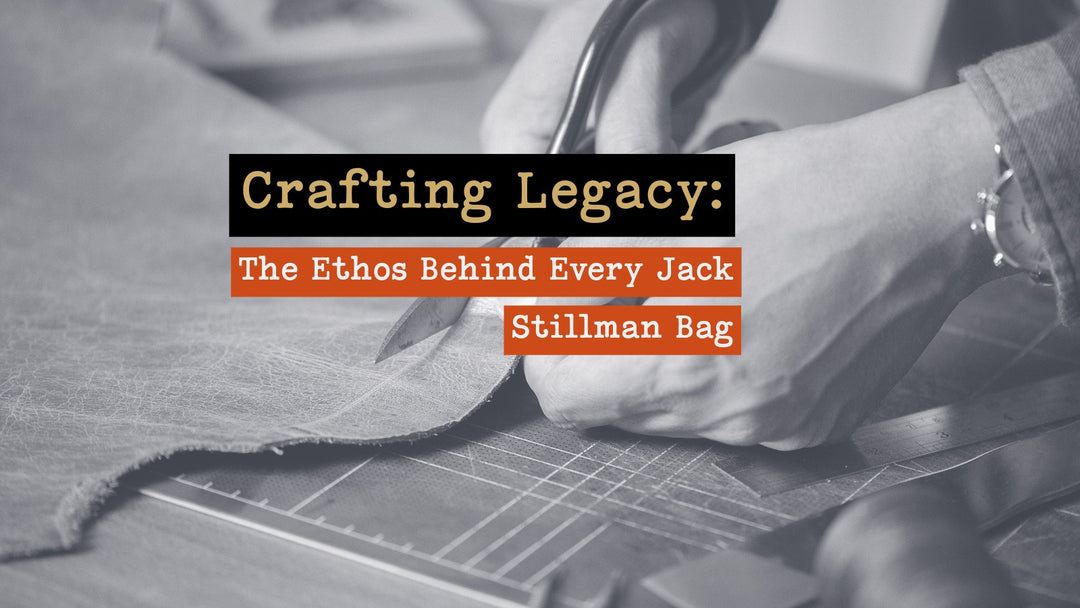At Jack Stillman, we're not just about creating products; we're about crafting stories, embracing nature, and endorsing sustainable choices. And while the world seems to be shifting towards man-made synthetics like nylon and polyester, we proudly wave the banner for a tried-and-true classic: waxed canvas. If you've ever wondered why we're so keen on this old-school material, here are five compelling reasons to favor waxed canvas over its synthetic counterparts.
1. Timeless Elegance with Every Wear
Unlike synthetic materials that wear out, waxed canvas wears in. Every scratch, every fold, and every mark infuse the fabric with character. Over time, waxed canvas develops a unique patina that tells a story — your story. It's like your favourite pair of jeans, getting better with age. Jack Stillman believes in products that evolve with you, creating a bond that only strengthens over time.
2. Nature's Gift: Sustainability at Its Best
In today's fast-paced world, it's easy to overlook the environmental footprint of our choices. Waxed canvas is a nod to the bygone era when products were made to last. It's durable, long-lasting, and reduces the need for frequent replacements. This natural material minimizes waste and the throwaway culture that synthetic alternatives often promote. By choosing waxed canvas, you're not just making a style statement; you're voicing your support for sustainable practices.
3. Be Ready, Come Rain or Shine
While man-made synthetics boast of being water-resistant, waxed canvas does the job with grace and without the plastic feel. Thanks to its waxed coating, this fabric naturally repels water, keeping your belongings dry. And if you're imagining an oily, sticky feel – think again! Modern waxed canvas retains a soft texture, ensuring your Jack Stillman bag is both practical and plush.
4. Breathability: Let Your Goods Breathe
Unlike nylon or polyester that can trap moisture, waxed canvas is breathable. This means that even if you're caught in an unexpected drizzle, the air circulation within your bag prevents mold and mildew. So, whether you're carrying artisanal cheese or an old leather-bound book, your goods stay fresh and in prime condition.
5. **Nostalgia Meets Modernity**
There's a certain charm in connecting with the past. Waxed canvas harks back to a time when craftsmanship and quality were paramount. But that doesn't mean it's stuck in the past. At Jack Stillman, we've infused contemporary design with this vintage material, giving you the best of both worlds. It's a testament to the fact that classics, when given a modern twist, become timeless.
In conclusion, while the world zips by, sometimes it's worthwhile to slow down, reflect, and make choices that resonate with our ethos. At Jack Stillman, we believe in the magic of waxed canvas – its elegance, its durability, and its inherent respect for nature. In an age of fleeting trends, be the one who stands out with something genuine, something with a soul. Choose waxed canvas. Choose Jack Stillman. 🌿👜







